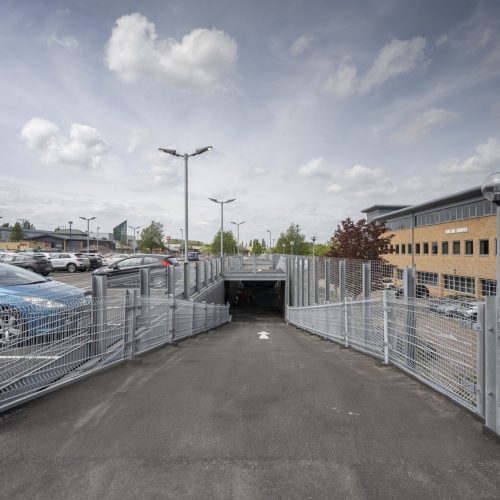How much do we know about the UK transport infrastructure of the future? What will the most important differences be from the transport networks we see today?
Different – and sometimes conflicting – priorities will shape the future. Making it easy for people and goods to move around and between major population centres boosts prosperity. But we also have an urgent need to cut greenhouse emissions.
And we can never overlook that space is finite and limited – particularly in towns and cities where decades of post-war planning decisions and redevelopment were often driven by the need to accommodate growing private car ownership. Everyone supports reversing that trend until they’re personally affected.
Beyond HS2
Cancelling the northern leg of HS2 has added a new dimension and urgency to the debate. The focus seems to be shifting to sub-regional and local investment to support better connected communities. This makes good sense – but there’s plenty of devil in the detail.
For this refocused investment to deliver maximum impact on regeneration and growth it has to support integrated transport systems. We have to think about how people will access improved local rail services and what happens when they step off them. Missing links are missed opportunities to boost prosperity in areas that need it most.
There’s a huge opportunity to build on the work devolved city regions have already done on city-region sustainable transport settlements (CRSTSs). CRSTS funding encourages a joined-up, multimodal approach to transport investment. The potential release of funds earmarked for HS2 could enhance this work.
Difficult Choices
Sometimes transport planning means tough decisions over which mode has priority when there’s not enough road space to satisfy all. Tensions exist between communities that want to boost walking and cycling to improve air quality and health, and others who see the same stretch of road as their essential route to work.
Decarbonising cars and road transport will inevitably happen as EVs become more widespread. This will contribute to achieving net zero, but it won’t solve the issue of congestion on major roads or in city centres. This will have to be done by switching road miles in private cars to public or active transport.
Making adequate charging points and e-mobility options available in the right places will be a feature of multi-modal transport solutions and would be an added incentive for drivers to switch to another mode to complete their journeys.
A Single Transport Mode Can’t Solve Every Problem
Solutions to the ideal mix of private, public and sustainable transport will be local and unique. The unifying factor in many cases will be simplifying modal shifts to maximise choice and make it easier for people to adapt their travel patterns to fit agreed priorities.
Multi-modal transport hubs will be the critical components of an integrated transport system. Rather like a watch, there are key parts of the mechanism that you don’t see but which keep everything synchronised and working harmoniously.
Mobility hubs are another option for making sustainable and active transport more attractive. These can be located at a rail station, park-and-ride or bus station to offer EV charging, car club parking, bike storage, e-bikes and scooters.
The Practicalities of Integrated Transport
It’s fair to say that if you wanted to build the perfect integrated transport system you probably wouldn’t start from here.
Naturally, there are constraints when transport networks comprise fixed assets that were never designed to be integrated – a rail system built when there were no private cars and only very rudimentary bicycles, for example.
Creativity and innovation such as the flexible modular car parking system developed by Octavius and Siderpark will be essential. Modern Methods of Construction (MMC) will be essential to minimise disruption and cost as we create new infrastructure to connect transport modes and journeys.
Procurement
Integrated solutions need integrated procurement that accommodates the needs of all stakeholders. The key will be bringing all of these parties together in a way that minimises bureaucracy and promotes efficient decision making.
We know from experience that local authorities need support to negotiate the specific technical approval processes of infrastructure owners.
Infrastructure owners and commissioning bodies will need to find collaborative answers. This may call for harmonising processes and standards or for leveraging the expertise of organisations like Octavius who understand how to work with stakeholders across different transport modes.
Accessible transport
Life for people who currently find transport networks hard to access could become an awful lot easier. They could also be made much harder if their needs are an afterthought in the design process. There’s no substitute for lived experience, which makes this an essential part of the industry’s diversity challenge. Far better to design accessible transport with people rather than for them.
Octavius has a strong track record of developing successful multi-modal hubs. We also have experience of engaging multiple stakeholders including infrastructure owners and operators, local authorities and community groups to design and implement optimised solutions.
You can read more about these approaches through our case studies and through our resource centres.


